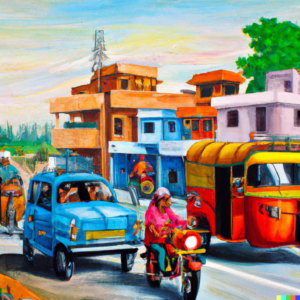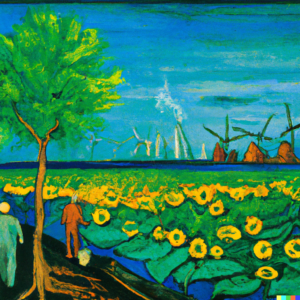 Cities, urbanising regions and rural areas are complex, highly integrated systems that pose enormous challenges for good governance, policy making, planning and transformation. Public bodies and firms are increasingly pushed to apply their creativity and innovation towards solving sustainable development challenges, such as access to housing, transportation, education, energy, health care, water and sanitation, clean environment etc. However, there are no standard decision-making tools that can be used to identify systemic or business pathways for transformation. Moreover, it is impossible to gain precise understanding of the advantages and disadvantages of possible routes for transformation without deep contextualised studies.
Cities, urbanising regions and rural areas are complex, highly integrated systems that pose enormous challenges for good governance, policy making, planning and transformation. Public bodies and firms are increasingly pushed to apply their creativity and innovation towards solving sustainable development challenges, such as access to housing, transportation, education, energy, health care, water and sanitation, clean environment etc. However, there are no standard decision-making tools that can be used to identify systemic or business pathways for transformation. Moreover, it is impossible to gain precise understanding of the advantages and disadvantages of possible routes for transformation without deep contextualised studies.
SITE4Sustainability is motivated by the projection that the current world population of 7.6 billion is  expected to reach 8.6 billion in 2030, with 5 billion people in urban areas, and with 95% of urban expansion occurring in the developing world, which will put enormous pressure on infrastructural facilities, public services, public health and natural resources like water. Here, SITE4Sustainability, with its expertise in guiding principles such as the Circular Economy; the Nexus Approach; the Multilevel Perspective; and the Solution Design Approach, is committed to help all development practitioners striving to steer sustainability transitions towards a cleaner, greener, bluer and safer world. It also promotes promote scholarship and knowledge generation on sustainability transitions. SITE4Sustainability does this by providing technical assistance, planning support, training and advocacy.
expected to reach 8.6 billion in 2030, with 5 billion people in urban areas, and with 95% of urban expansion occurring in the developing world, which will put enormous pressure on infrastructural facilities, public services, public health and natural resources like water. Here, SITE4Sustainability, with its expertise in guiding principles such as the Circular Economy; the Nexus Approach; the Multilevel Perspective; and the Solution Design Approach, is committed to help all development practitioners striving to steer sustainability transitions towards a cleaner, greener, bluer and safer world. It also promotes promote scholarship and knowledge generation on sustainability transitions. SITE4Sustainability does this by providing technical assistance, planning support, training and advocacy.
 We believe that under an existing regulatory framework and markets’ functioning, any solution to address a complex societal problem has to comprise a vector of elements rather than being a single magic bullet. In SITE4Sustainability, S stands for science or knowledge creation investments, which may be necessary to understand the problem and find ways to tackle it. I is for any innovation, be it technological/social/business/policy, to be introduced into the system. T refers to existing technology, in terms of mobilisation / repurposing / redesign / management. E stands for every type of engagement (i.e. communication and dialogue) necessary with systemic players for adoption and diffusion of the above solution design. The nature of this final aspect, the engagement investments, will depend on the other elements of the solution design, the targeted problem, the systemic context and the current regulations and policy frameworks.
We believe that under an existing regulatory framework and markets’ functioning, any solution to address a complex societal problem has to comprise a vector of elements rather than being a single magic bullet. In SITE4Sustainability, S stands for science or knowledge creation investments, which may be necessary to understand the problem and find ways to tackle it. I is for any innovation, be it technological/social/business/policy, to be introduced into the system. T refers to existing technology, in terms of mobilisation / repurposing / redesign / management. E stands for every type of engagement (i.e. communication and dialogue) necessary with systemic players for adoption and diffusion of the above solution design. The nature of this final aspect, the engagement investments, will depend on the other elements of the solution design, the targeted problem, the systemic context and the current regulations and policy frameworks.
With the SITE framework, we focus on:
-Policy design/evaluation of government programmes;
-Project design/Project evaluation;
-Strategy design for specific sustainability transitions – for both public and private sector;
-Digital Skilling of underprivileged;
-Guiding research on sustainability transitions.
References:
[1] https://www.ellenmacarthurfoundation.org/circular-economy/concept last accessed on May 1, 2021.
